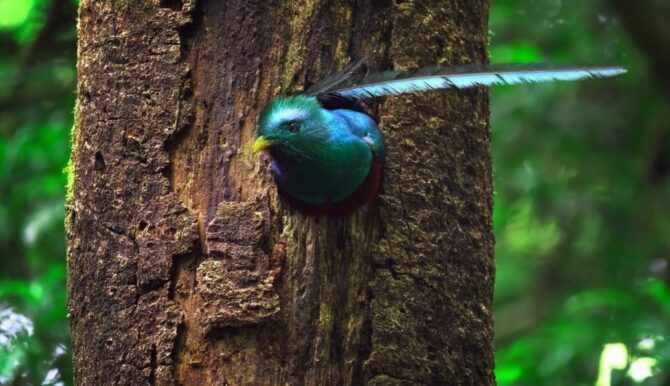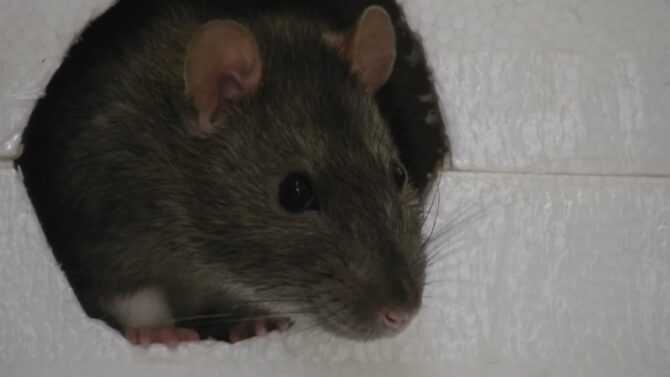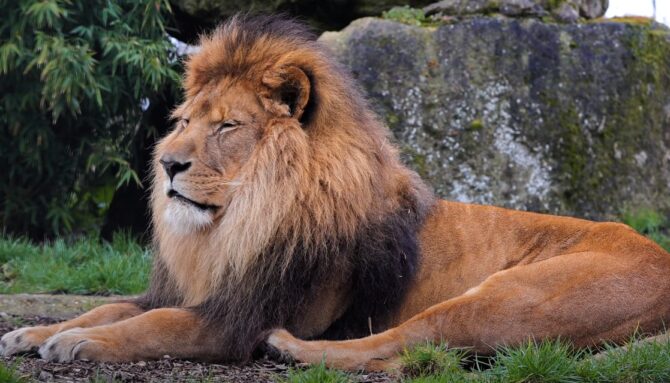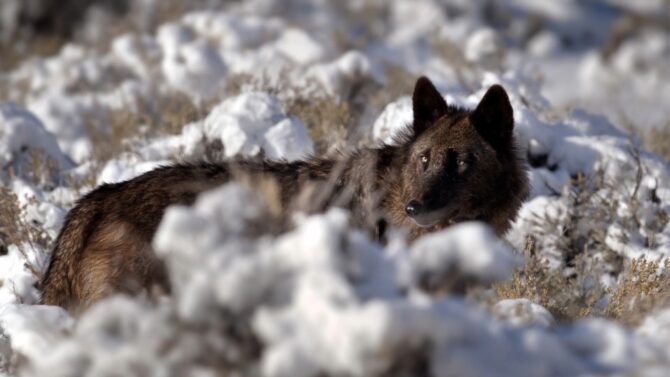Mammals: Facts, Characteristics, Types & Pictures
Mammals refer to a group of animals characterized mainly by the presence of mammary glands in their female species.
The mammary gland (breast) produces mills which serve as the major diet of their young ones immediately after birth.
Other memorable features distinguish the mammalian class as it houses some of the most intelligent animal species.
The term mammal was coined from the word Mammalia, originally coined by renowned biologist Carol Linnaeus in 1758.
The term traces its origin to the Latin word mamma, which translates to “tear” or “pap.”
This animal class boasts a rich history as their ancestral evolutionary origins are one of the most studied animal species.
They hold numerous ingenious features that reveal fascinating details about animals at large.
We explore the various interesting features of the animal class as well as its sub-groups.
Interesting Facts About Mammals
- There are about 6,399 recognized extant mammal species worldwide, with about ninety-six extinct species.
- Some mammals, like the male Dayak fruit bat, can feed their young from noticeable nipples beneath its wings.
- The bowhead whale, the mammal with the longest lifespan, can live for over 200 years, approximately seven human generations.
- The blue whale is the largest animal known to have existed, such that its tongue can weigh as much as an elephant. This sea giant measures up to 100 feet long and weighs about two hundred tons.
- The Kitti’s hog-nosed bat is the world’s smallest mammal, about 1.3 inches long and two grams heavy.
Characteristics of Mammals
Hair
The presence of hair on the skin is one characteristic unique to mammals but not all species of the class display this quality.
Certain groups, such as the Cetaceans, and aquatic mammals, do not need to possess hair on their bodies.
Aside from a few exceptions, every other member possesses two layers on their skin: the nonvascular epidermis and the inner layer dermis.
The major function of fur or hair on the bodies of this class is thermoregulation, with particular emphasis on fur/hair denseness.
Dense fur/hair tends to improve insulation and may vary depending on the species habitat.
Arctic and desert mammals possess dense fur/hair compared to others, evidence of the use of hair/fur for thermometer regulation.
Biological Systems
Of the characteristics shared, the most ingenious and fascinating can be found in their biological systems.
This is particularly important as the complexity of their systems reveals more intricate details that point to the intelligence and supremacy of the mammalian class compared to other species.
In the biological framework of mammals, one general shared feature is the presence of cervical vertebrae (neck bones).
All mammals possess seven cervical vertebrates except the two-toed sloth and manatee, who both possess six cervical bones. The three-toed sloth, however, possesses about 9 cervical vertebrae.
Another feature of the biological makeup of mammals that sets them apart from other animal species is the neocortex in the brain.
Only mammals possess a neocortex in their brain. This feature is noteworthy as the neocortex is integral to cognition, generation of motor commands, sensory perception, spatial language, and reason.
The exclusivity of the neocortex to the brains of mammals reveals in grand detail how much intelligence can be exhibited by species that belong to the animal group.
The hearts of mammals ranks as one of the major characteristics exhibited by species in the animal group.
Exclusive to all group members, mammalian hearts all have four chambers, two lower ventricles, which operate as the discharging chambers, and the upper atria, known as the receiving chambers.
The chambers of the heart of this group are separated by four valves which help direct the flow of blood in the right direction.
The lungs in mammals are honeycombed and spongy and operate alongside the diaphragm, which makes breathing possible.
The biological characteristics exclusive to the class further extend to their excretory systems. Being ureotelic, species of the animal class make use of their livers to convert ammonia to urea.
The kidney, an important organ in the excretory process, is shaped like a bean and has distinctive parts, such as the renal pyramid and renal pelvis.
Aside from animals such as cetaceans, bears, and pinnipeds, all species of animals possess bean-shaped kidneys.
Middle Ear Bones
An anatomical characteristic that reveals so many wonders, the ear bones of the animal group species are a key distinctive feature of the animal group.
The presence of three bones, namely; the malleus, the incus, and the stapes, in the ears of the animal group species helps it in processing sound from the eardrum.
Tooth Replacement
A key characteristic of mammals is that species’ teeth can only be replaced once.
All members, except tooth whales and some rodents, exhibit this feature (Diphyodonty).
Other exceptions to this characteristic include elephants, kangaroos, and manatees, who exhibit polyphyodonty and grow teeth throughout their lifespan.
Jaw Joint
Exclusive to the anatomy of mammals is the jaw joint, which refers to the meeting point of the lower jaw bone, the dentary, and the small cranial bone known as the squamosal.
Sound Production
A distinctive quality of this species is its ability to make oval sounds.
In their anatomy, there exists a larynx that aids in making sound and a vocal tract for filtering sound.
The primary purpose of the larynx in mammals is to help improve the volume and pitch of the sound, while strength for sound production is channeled from the air inhaled from the lungs.
In certain primitive species of the animal class, the sound is produced by hissing, resulting from exhaling from a closed larynx.
The sound production in this species is significant evidence of intelligence as certain species can learn new vocal sounds.
Mammary Glands
A generic characteristic in mammals is their possession of a modified sweat gland that produces milk to feed their young.
While it is more developed in females, mammary glands are present in both genders on each side of the anterior chest wall.
Classification of Mammals
While scientists have grouped the class Mammalia into several orders, these orders are under the following subclasses:
- Theria
- Prototheria or Monotremes
These subclasses house infraclasses and orders based on distinctive characteristics, but all mammals are either Therians or Monotremes based on their reproductive techniques.
Theria
Therians are mammals that give live birth, implying that they do not have to lay shelled eggs but develop within their mother, feeding on nutrients through a placenta.
This animal subclass also has external ears called pinnae, a distinctive trait that identifies the Therians.
However, years of evolution account for the lack of pinnae in some Therians, like the earless seals.
Two infraclasses, Eutheria and Metatheria, are under the Theria subclass.
Eutherian offspring fully develop inside the mother, deriving nutrients through the mother’s placenta.
Nineteen orders, including Proboscidea (Elephants), Rodentia (Rats), Carnivora (cats), and Artiodactyla (cows), are grouped under the Eutheria infraclass.
The Metatherians produce immature offspring that reside in their mother’s pouch until they reach full maturity.
Seven orders make up this infraclass; the Diprotodontia (e.g. Kangaroo), Didelphimorphia (New world opossum), and Paucituberculata (South American rat opossum) are three examples.
Monotremes
Monotremes constitute egg-laying mammals, making up the second mammal subclass.
The Prototheria subclass is not as diverse as Theria, having one order, the Monotremata, with six species, including the Duckbilled platypus and Echidna.
Frequently Asked Questions
What are some primary characteristics of mammals?
Mammals are warm-blooded animals with furs and mammary glands to feed their young.
How are mammals classified?
Mammals are classified into Theria and Prototheria or Monotremes. Under the Theria are the Eutheria and Metatheria infraclasses with nineteen and seven orders, respectively, and the Monotremes, containing one order and six species.
Are dolphins mammals?
While dolphins live in the water like fish, they are mammals, using lungs to respire instead of gills. They also give birth to live young and nurse them with their milk, characteristics typical of mammals.
Wrap Up
Being a member of one of the most diverse classes of animals and the most evolved of all animal classes is surreal.
However, humans are the most intelligent species of all animals — a position with the responsibility of supporting all conservation efforts and ensuring the continuity of all extant species.








